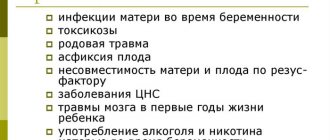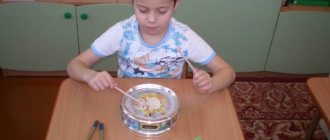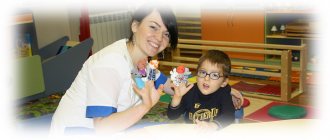Speech therapy presentation at PMPk
Speech therapy presentation for primary medical education.
- Speech environment and social conditions:
• There are no neuropsychic, chronic somatic diseases, or speech disorders in parents and close relatives (denied).
- Speech defects in loved ones.
- 2- tongue.
- Hereditary diseases.
- The level of parents is low.
- The upbringing process is under control or not, they are interested in the problems of their child, parents have little communication with the teacher (speech therapist), and do not pay enough attention.
- Not enough attention is paid to appearance.
- General social and everyday skills are not sufficiently developed (untidy, carelessly dresses, “dirty”).
- Parents are not interested in the life of the class.
2. State of manual motor skills (range of movements, pace, ability to switch, presence of left-handedness):
- Fine motor skills of the hands are poorly developed.
- There are no impairments of manual motor skills.
- Prefers to work with his left hand (or sometimes works with his left hand)
- The leading ones are the right hand, the right leg, the right eye.
- Head performs tests correctly; with isolated errors, slowly.
- The optical-kinesthetic organization of movements is formed; not sufficiently formed: performs movements with errors, slowly.
- When performing exercises on the dynamic organization of movements, inaccuracies are also observed (synchronous movements of the fingers of the right and left hands).
3. Gross motor skills:
- Impaired switchability of movements (not timely, delayed).
- Associated movements appear.
- Impaired movement coordination is not performed simultaneously, inaccurately.
- There is a general inhibition of movements.
- Characteristic motor restlessness.
- Slow in movements.
- General coordination is impaired. Clumsy.
4. Articulatory apparatus:
— The anatomical structure of the organs of the articulatory apparatus without anomalies.
— The structure of the face is not disturbed (disturbed)
- Facial muscle tone is intact or impaired (hypertonicity, hypotension, dystonia)
— Mobility of the facial muscles is not impaired, impaired (chin tremor, hypomimia, hyperkinesis).
— The structure of the lips is normal or abnormal (massive lips, the presence of a cleft, the presence of postoperative scars)
— Lip tone is not impaired or impaired (hypertonicity, hypotonia, dystonia)
— Lip mobility is not impaired or impaired (sedentary, excessively mobile)
— The structure of the teeth is normal; violations - large, small, rare, frequent, crooked, outside the jaw arch, with large gaps, absence of incisors (lower, upper); presence of extra teeth, dentition disorder.
- The hypoglossal ligament is shortened
— The bite is correct; violated - anterior open, lateral open, prognathia, progenia.
— The structure of the hard palate is not damaged
— The structure of the soft palate and mobility are not impaired
— The structure of the tongue is not damaged.
— Abnormalities are noted: thick, small, massive, wide, narrow, forked, shortened frenulum.
— The muscle tone of the tongue is normal; impaired – spasticity, hypotension, dystonia.
Mobility of the tongue is not impaired; disorders - hyperkinesis, tremor, deviation (deviation) of the tongue (to the right, to the left); the tongue is not removed from the oral cavity, the range of articulatory movements is limited; decreased amplitude of articulatory movements, inactive, has difficulty maintaining a posture, has difficulty switching the position of the tongue, movements of the tip of the tongue are impaired. Salivation.
— Speech motor skills are sufficiently developed; within normal limits; not enough. Performs basic articulatory movements with lips and tongue. Movements are slow. Cannot maintain the position of the organs of articulation for a long time. The coordination of movements of the tongue and lips is impaired. The differentiated movements of the tip of the tongue are slightly impaired. The range of movements of the tongue is full; incomplete. The tone is normal; sluggish. The duration of the movements and the tempo of the movements are normal. No substitutions of movements or synkenesis are observed. Synkenesis and movement replacements are noted.
5. Oral speech.
General sound of speech:
- Unintelligible (clear, blurry, difficult to understand for others).
- The rhythm is normal. Excessively stretched.
- Speech rate is slow (fast).
- Expressive.
- Not rushed (excessively fast).
- Little talkative.
- Uses pauses and stress correctly.
- He speaks in monosyllables.
- Makes mistakes due to unformed lexical and grammatical aspects of speech (agrammatism).
- Intonationally inexpressive (or differentiated). Uses basic types of intonation correctly.
- Speech intelligibility is not impaired.
- Speech intelligibility is slightly reduced.
- There is arrhythmia, a slowdown in rhythm at the end of a phrase or text.
- Uses word stress correctly.
- There is no logical stress.
- Uses pauses in speech too often.
- The voice is quiet, strong, sonorous, hoarse, trembling, nasalized.
(Voice (normal volume / loud / quiet / fading / dull / ringing / monotonous, weakly modulated / modulated.)
• Type of breathing is diaphragmatic, speech breathing is smooth; not smooth enough, speech exhalation is long; not long (4-5 words).
6. Speech understanding:
- Difficult, instructions require repeated explanation.
- He understands the speech of others in accordance with his level of intelligence.
- The state of biological hearing according to the medical record is normal.
- The state of speech perception is normal. Correctly performs actions according to verbal instructions.
7. Vocabulary:
- Passive and active vocabulary is characterized by poverty and inaccuracy in the use of many words.
- The use of verbs and adjectives suffers most; generalizing nouns, understanding little-known words (apiary, beehive, waterfall, shoulder straps, hammock, trunk, fountain, boulevard, herbarium, parcel, etc.)
- Limited, poor. Sufficient. Relatively developed.
- Insufficient knowledge about the world around us.
- Familiar with rarely used vocabulary.
- The relationship of antonymy and synonymy has not been formed.
- Low level of practical generalizations.
- Difficulties in understanding and using vocabulary.
8. Grammatical structure of speech:
a) No violations. No agrammatisms were found in spontaneous speech.
b) Agrammatisms are observed during special research: errors in the use of complex prepositions, in the agreement of adjective and noun, verb and noun.
c) Agrammatisms when forming adjectives from nouns, when forming new words by analogy.
d) Gross violations.
- In speech he uses mainly simple common sentences. In rare cases, complex sentences are noted.
- Makes sentences based on supporting words.
- Complex sentences based on pictures (uses conjunctions a, but, and)
- Complex sentences are noted only in isolated cases (because; despite; although; when; which; therefore).
- Errors in the use of prepositional-case prepositions, complex prepositions, case endings of plural nouns;
- There are agrammatisms in normal speech; incorrect agreement adj. with noun (The girl has a red dress)
- Incorrect use of prepositional case constructions (The leaves on the trees have turned yellow.)
- There is a misunderstanding and differentiation of constructions with reflexive verbs (the sun illuminates the earth - the sun illuminates the earth)
- Agrammatisms in the formation of adjectives from nouns (blueberry juice).
- Incorrect use of animal names, names of baby animals
- Corresponds to the developmental characteristics of his mental development; children of primary school age.
- Understands and uses prepositions.
- Uses prefixes to form nouns. and ch.
- General poverty and undifferentiation of the grammatical means of the language.
- Primitiveness of syntactic constructions.
Types of violations:
- changing nouns by case;
- agreement of nouns with numerals 1,2,5.
- forming the plural of nouns,
- formation of adjectives from nouns,
- formation of prefixed verbs;
- understanding of prepositional-case constructions (others)
9. Phonemic perception (not impaired/impaired), sound analysis and synthesis:
- Violations in sound-letter analysis due to insufficient development of thinking operations (analysis and synthesis).
- Sound differentiation is not impaired. Unsustainable skill. Single or multiple errors. Inability to complete tasks.
- Correctly differentiates the studied sounds by ear or has an unstable auditory differentiation skill (showing pictures - cat kit).
- When reproducing a series of syllables with phonetically similar sounds with errors, he makes isolated errors.
- It is difficult to determine or correctly determine the number and sequence of words in sentences (with conjunctions and prepositions).
- The ability to distinguish a sound from the background of a word has been developed. Determines the presence or absence of a sound in a word, the sequence and number of sounds in a word, its place in a word. Determines the first sound in words correctly, but makes mistakes when determining the last sound. Makes mistakes when identifying sounds in the middle or at the end of a word.
- The ability to determine the place of a sound in a word in relation to other sounds has not been developed. Made numerous mistakes (in the word GOAT the sound “Z” is heard before the sound “K”)
- There are difficulties in differentiating hard and soft, voiced and voiceless sounds.
- Phonemic synthesis has been formed. Correctly reproduces words from the sequential names of sounds (r-u-k-a, s-t-a-k-a-n, pasta, crow).
- Phonemic representations are sufficiently formed, insufficiently formed, or not formed. Comes up with words for given sounds, selected pictures with 5 sounds in the name. However, he made isolated mistakes in the task of coming up with words of 5 sounds.
10. State of language analysis and synthesis
Correctly/incorrectly determines the sequence and number of words in sentences with prepositions: “Katya is going for a walk” (2). “There is a book on the table” (3). “Children are skating” (5). “It can be very hot in summer” (3), etc.
Made mistakes when determining the sequence of words in a sentence. In the sentence “there was a blue vase on the table,” the word “vase” comes after the word “table,” etc.
The synthesis is not disrupted. Correctly composes sentences from sequentially given words.
11. State of sound pronunciation
- Monomorphic disorder of sound pronunciation: velar rhotacism/lateral sigmatism of sibilants/uvular rhotacism.
- Currently, there are no problems with sound pronunciation. Sound pronunciation is not impaired.
- Polymorphic disorder of sound pronunciation: lateral sigmatism of sibilants, lateral rhotacism.
12. Sound-syllable structure of speech:
- Safe. There are no violations of the sound-syllable structure of the word. In spontaneous speech, the sound-syllable structure of the word is not disrupted.
- Correct reproduction of words of different syllable structures.
- Inability to reproduce words.
- Impairment in phrasal speech; rearranges or increases syllables; substitutions, omissions, repetitions.
- Makes isolated mistakes when reproducing little-known four-syllable words with consonant clusters (mainly assimilations, simplifications of consonant clusters, omission of syllables).
Pronunciation of words with complex syllabic composition.
- reduction of consonant groups: ( +/ - )
- Stopping the sound of a consonant at the end of a word: ( +/ — )
- Dropping the initial consonant: ( +/ — )
- adding an extra consonant to a syllable: ( +/ — )
- rearrangement of sounds in a word: ( +/ -)
- syllable assimilation: ( +/ — )
- reduction in the number of syllables: ( +/ - )
- adding the number of syllables: ( +/ — )
13. State of visual function
1) The state of biological vision according to the medical card is normal.
2) State of higher visual-spatial functions:
a) the body diagram is formed;
b) correctly determines the location of objects (right or left);
c) he did not perform all of Head’s tests correctly (difficulty in identifying the right and left parts of the body of a person sitting opposite him);
d) correctly compiled pictures cut into 6-8 parts, starting from 8 he made isolated mistakes;
e) the construction of figures from sticks according to the model is not impaired. It is difficult to design and reconstruct geometric figures from a representation. According to verbal instructions, I failed to complete many tasks.
3) State of speech-visual functions (based on an album of optical and visual tests): names all printed and handwritten letters correctly.
Recognizes shaded, superimposed, unfinished, mirrored and dotted letters, and graphically similar letters.
The construction of letters is generally correct, making only isolated errors.
Makes mistakes in reconstructing letters from elements.
The idea of the structure of the visual image of handwritten letters is impaired (cannot verbally explain what elements the letter “v” consists of, how “t” and “p” differ).
14. A story based on a series of plot pictures
Criterion of semantic integrity
|
|
|
|
Criterion for lexical and grammatical formatting of statements.
| The story is grammatically correct with adequate use of lexical means. |
| The story is written without ungrammaticalisms, but there is stereotypical grammatical design, isolated cases of missing words or incorrect word usage. |
| There are agrammatisms, distant verbal substitutions, and inadequate use of lexical means. |
| The story is not finalized. |
- Retelling the text you listened to
Peas.
There were peas in one pod. A week has passed. The pod opened and the peas merrily rolled out into the boy’s palm. The boy loaded the gun with peas and fired. Three peas flew onto the roof. There they were eaten by pigeons. And one pea rolled into a ditch. She sprouted. Soon it turned green and became a curly pea bush.
1) Criteria for semantic integrity.
| All semantic links are reproduced |
| Semantic links are reproduced with minor abbreviations |
| The retelling is not complete, there are significant abbreviations or distortions of meaning, or the inclusion of extraneous information. |
| Failure to comply. |
2) Criteria for lexico-grammatical format
| The retelling was compiled without violating lexical and grammatical norms. |
| The retelling does not contain agrammatisms, but there is a stereotypic design of the statement, a search for words, and some close substitutions. |
| Agrammatisms, repetitions, and inadequate use of words are noted. |
| Retelling not available. |
3) Criteria for independent implementation.
| Independent retelling after the first presentation. |
| Retell after minimal help (1-2 questions) or after re-reading. |
| Retelling the questions. |
| Even for questions, retelling is not available. |
16. Characteristics of reading.
Reading technique:
- Letter by letter
- Syllabic
- Age appropriate/inappropriate
- Automated/non-automated
- Breathing while reading:
- Right/Wrong
- With intonations
- Breathing rhythm disturbance.
- Expressiveness.
- Monotonous/expressive.
- Reading comprehension.
In full / difficult.
17. Characteristics of the letter.
- No spelling errors.
- When copying, errors (single, multiple) are (not) observed.
- There are numerous errors in dictations and presentations.
- Graphic errors: missing elements or extra elements. The difficulty is in orientation on the notebook sheet, in finding the beginning of the line. Difficulty holding a line. Constant fluctuations in the inclination and height of letters, inconsistency of letter elements in size, separate writing of letters within a word. Difficulties in updating the graphic and motor image of the desired letter, replacing visually similar and closely written letters (K - N), replacing handwritten letters with printed ones, an unusual way of writing letters, especially capital ones. Consistent specularity when writing the letters Z, E, E, S. Replacement of letters U - Ch, d-b, d-v.
- The impossibility of creating the skill of ideogram writing (“class robot”, “exercise”, “keno” instead of “cinema”).
- Specific errors: perseveration (inert repetition) of letters, syllables, words, types of tasks; omissions of letters and syllables; anticipation (anticipation) of letters, for example, “poklovok” - float; contamination (sticking together) of words. Lack of emphasis at the beginning of the sentence. Omission and replacement of vowels, including stressed ones. Violation of the order of letters. Tendency towards phonetic writing (“radono” instead of “joyfully”, “ruchyi” - “streams”)
Difficulties in isolating a holistic image of a word, as a result of which two significant words, words with prepositions are written together; later, due to overgeneralization of the rules for writing prepositions, prefixes are written separately from the roots.
- Spelling mistakes
- The ability to check has not been developed (does not check; if it checks, it does not see errors / does not see errors or corrects incorrectly).
- The writing pace is slow.
Conclusions:
- First half of 1st grade: difficulties in mastering writing. They manifest themselves in unclear knowledge of the letters of the alphabet, difficulties in translating a phoneme into a grapheme, and in translating a printed grapheme into a written one.
- Second half of first grade or beginning of 2nd grade: disruption of the formation of writing processes. Manifestations: replacement and mixing of written and printed letters according to various criteria, difficulty in merging letters, syllables, syllables into words, writing words without vowels, fused writing of several words or separate spelling of words.
- Second half of 2nd year of study – dysgraphia.
Third year of study – dysorthography. Manifestations: a large number of spelling errors, inability to apply spelling rules according to the school curriculum for the corresponding period of study.
Conclusion for the ZPR:
- (1 CL.) Reading and writing impairment caused by OHP (FFN, FN).
- The pace of smoothness is of a convulsive (non-judicial) nature.
- (2-3 grades) Residual phenomena of insufficient development of language means at the level of oral and written speech.
- (Recommission) Reading and writing disorders caused by insufficient development of language means, with a predominance of inferiority of the sound or semantic side of speech.
A speech therapy report can be:
· FNR,
· FFNR,
· ONR-3,
· NVONR,
· LGNR,
· Sound pronunciation is normal, speech is within the age norm.
Recommendations:
Based on pedagogical observations and problems in the educational process, I request a consultation with a neuropsychiatrist.
Areas of speech correction work recommended on the basis of a diagnostic speech therapy examination.
(underline the directions carried out during the correction course; circle all the areas of work necessary for the patient).
1. Development of auditory perception.
2. Development of phonemic analysis and synthesis (discrimination of consonants based on the characteristics of voiced/voiceless, place of formation, hardness/softness; determination of the phoneme in a word/phonemic composition of words; naming words with a given phoneme.
3.Development of speech breathing, practicing oral and nasal exhalation.
4. Stimulation of velopharyngeal closure, activation of articulation, development of mobility of the articulatory apparatus.
5. Work on the voice (removing nasalization, developing intonation expressiveness, speeding up / slowing down the rate of speech, developing a soft voice).
6. Correction of sound pronunciation: ________________________
7. Education of kinesthesia necessary for speech.
8.Development of passive and active vocabulary (nouns, verbs, adjectives).
9. Development of the grammatical structure of speech.
10. Development of speech understanding.
11. Development of auditory-visual attention.
12. Development of memory (audio-speech, visual).
13. Formation of cognitive skills (discrimination of shape, color, number of objects).
14. Formation of elementary mathematical concepts.
15. Development of gross/fine motor skills
Speech therapy diagnostics has been experiencing a crisis for a long time and does not yet satisfy the requirements of both science and practicing speech therapists. Speech therapy conclusions are defined and formulated differently in different regions, cities, and districts. Thus, there are differences in the approach of Moscow and St. Petersburg speech therapy schools to the formulation of speech therapy conclusions. There is also a discrepancy between the conclusions corresponding to the classification of speech disorders and the requirements of the pedagogical administration. In some recommendations for the formulation of speech therapy conclusions, the diagnosis of general speech underdevelopment (GSD) dominates. Against the background of criticism of the existing shortcomings in speech therapy diagnostics, there are attempts to replace traditional speech therapy classifications with clinical, medical classifications that are too detailed and descriptive, which are not focused on solving practical problems of correcting speech disorders. The problem of diagnosing speech disorders is of great theoretical and practical importance. From a theoretical point of view, the issue of diagnosing speech disorders is related to the problem of speech disorders. From a practical point of view, a well-founded solution to this issue contributes to a more correct staffing of speech groups, the selection and referral of children to mainstream and special schools, and a more targeted and differentiated speech therapy intervention. The problem of classification of speech disorders is relevant in many sciences that study speech. Speech is a complex physiological, mental, mental, linguistic, sensorimotor process, in which both more elementary (sensorimotor, gnostic-practical) and highly organized levels (semantic, linguistic) are intertwined. In this regard, speech and its disorders are studied by many sciences: medicine, psychology, linguistics, psycholinguistics, etc. At the same time, they also relate to the classification of speech disorders in various aspects: clinical, pathophysiological (taking into account the analyzer principle, the nature of disorders of the language system), psycholinguistic . In speech therapy, there are two traditional classifications of speech disorders: psychological-pedagogical and clinical-pedagogical. These classifications consider speech disorders in various aspects. But at the same time, the data of both classifications complement each other and serve common tasks: recruiting groups of children with speech pathology and implementing systemic, differentiated speech therapy treatment, taking into account the symptoms and mechanisms of speech disorders. The psychological and pedagogical classification is focused on identifying primarily speech symptoms (symptomological level) based on psychological and linguistic criteria. The symptomological level of analysis of speech disorders makes it possible to describe the external symptoms of language (speech) underdevelopment in children, to identify impaired components of speech (general underdevelopment, phonetic-phonemic underdevelopment, etc.), which serves as the basis for sending children to the appropriate groups of kindergarten or to a certain type of school. Thus, determining the symptomological level of speech disorders solves, first of all, the practical problems of recruiting groups and creates the prerequisites for determining the nature of speech pathology. It is known that with the same pathology (form of speech disorder), the language system can suffer in different ways. Conversely, the same symptoms can be observed in forms of speech disorders with different mechanisms. So, for example, general underdevelopment of speech can be observed with an erased form of dysarthria, with motor alalia, with childhood aphasia. In the process of speech therapy work, it is important to take into account both the level of unformed speech, impaired components of speech, and the mechanisms and forms of speech disorders. The unity of these two aspects of speech therapy diagnostics makes it possible to correct speech disorders in a more differentiated manner. Speech therapy diagnostics should proceed from the general to the specific: from identifying a complex of speech symptoms to clarifying the mechanisms of speech pathology, to clarifying the interaction between speech and non-speech symptoms, to determining the structure of the speech defect. The clinical and pedagogical classification is not strictly correlated with clinical syndromes. She focuses on those disorders that should be the object of speech therapy. In the process of making a speech therapy report, medical data and clinical characteristics are necessary, which make it possible to clarify a particular speech therapy diagnosis. Clinical characteristics are focused on explaining the causes of speech disorders, on treating the child, and not on the system of correction and speech development. Currently, both clinical-pedagogical and psychological-pedagogical classifications need clarification and expansion. For example, the practice of school speech therapists shows that as violations of sound pronunciation and phonemic development are corrected, there is no reason to talk about OHP. However, for a long time, children continue to have underdevelopment of the lexico-grammatical structure of speech, which leads to great difficulties in mastering the Russian language program, assimilation and implementation of spelling rules. Therefore, there is reason, along with ONR, NONR (mildly expressed general underdevelopment of speech), to highlight lexico-grammatical underdevelopment of speech. It is necessary to clarify the forms of speech disorders within the clinical and pedagogical classification. Summary. To staff speech groups in kindergartens, send children to schools of a certain type and carry out differentiated correctional and speech therapy work, both criteria for speech therapy diagnostics are important: symptomological and clinical-pedagogical. Speech therapy diagnostics, which sets correctional and developmental tasks, should be considered within the framework of the existing classifications in speech therapy (psychological-pedagogical and clinical-pedagogical), and the speech therapy conclusion should take into account the intersection of these two classifications. When formulating a speech therapy report, it is also advisable to take into account the stages of the examination: from determining the symptoms of speech disorders, identifying impaired components to clarifying the mechanisms and structure of the speech defect (i.e., the form of speech disorders).
SLOGOPEDIC CONCLUSION WHEN EXAMINING PRESCHOOL CHILDREN Examination of preschool children with normal intelligence In the speech therapy report, it is recommended to indicate the nature of speech disorders based on both classifications. 1. Symptomological (psychological and pedagogical) classification takes into account which components of speech are impaired and to what extent. This classification contains the following groups of speech disorders: - Phonetic speech disorder (FSD) or impaired pronunciation of individual sounds (NPOS). In case of FND, the phonetic aspect of speech (sound pronunciation, sound-syllabic structure of a word, prosody) as a whole or any individual components of the phonetic structure of speech (for example, only sound pronunciation or sound pronunciation and sound-syllabic structure of a word) are impaired. — Phonetic-phonemic speech disorder (FFSD). With FFND, along with a violation of the phonetic aspect of speech, there is also an underdevelopment of phonemic processes: phonemic perception (auditory differentiation of sounds), phonemic analysis and synthesis, phonemic representations. — Lexico-grammatical underdevelopment of speech (LGNR). With LGNR, children have normal sound pronunciation, phonemic processes are relatively preserved (most often as a result of speech therapy), but there is a limited vocabulary and a violation of the grammatical structure of speech. — General underdevelopment of speech (GSD levels I, II and III), as well as mild general underdevelopment of speech (GONSD). With OHP in children, all components of the language (speech) system are impaired: the phonetic-phonemic side of speech, vocabulary, grammatical structure.
2. Clinical and pedagogical classification reveals the mechanisms, forms and types of speech disorders. The following forms of speech disorders are taken into account: dyslalia, dysarthria or an erased form of dysarthria, rhinolalia, voice disorders, motor, sensory alalia, childhood aphasia, speech development delay (SRD), general speech underdevelopment with mental retardation (MDD), OSD of unknown pathogenesis , stuttering, tachylalia, stumbling (poltern). Options for the intersection of two classifications. • Phonetic speech disorder (FSD) or disorder of pronunciation of individual sounds (NPOS): - dyslalia, - dysarthria or erased dysarthria, - voice disorders, - rhinolalia. • Phonetic-phonemic speech disorder (FFSD): - dyslalia, - dysarthria or erased dysarthria, rhinolalia. • Underdevelopment of the lexico-grammatical structure of speech (LGNR): exit from motor (sensory) alalia, similar to delayed speech development, with mental retardation, unknown pathogenesis. • General speech underdevelopment (GSD levels I, II, III, NOSD): motor alalia, sensory alalia, - sensorimotor alalia, dysarthria or erased dysarthria, as a type of delayed speech development, with mental retardation, - unknown pathogenesis.
Violation of the tempo and rhythm of speech: stuttering, tachylalia, bradyllalia, stumbling (poltern). Approximate wording of a speech therapy report General speech underdevelopment (level I). Motor alalia. General speech underdevelopment (level I). Sensory alalia. General speech underdevelopment (level I). Erased pseudobulbar dysarthria. General speech underdevelopment (level I). Motor alalia, stuttering. General speech underdevelopment (level I). Sensorimotor alalia. General speech underdevelopment. Childhood aphasia. General speech underdevelopment (II level). Erased pseudobulbar dysarthria. General speech underdevelopment (II level). Motor alalia. General speech underdevelopment (II level). Motor alalia, stuttering. Lexico-grammatical underdevelopment of speech. Exit from motor alalia. Phonetic-phonemic speech disorder. Erased pseudobulbar dysarthria.
Phonetic-phonemic speech disorder. Open organic rhinolalia. Phonetic speech disorder. Motor functional dyslalia. Phonetic speech disorder. Open organic rhinolalia. Examination of preschool children with mental retardation The term “ONR”, proposed by R. E. Levina and the staff of the Research Institute of Defectology (Fundamentals of the theory and practice of speech therapy / Edited by R. E. Levina. - M., 1968), is defined as follows: “General underdevelopment speech – various complex speech disorders in which children have impaired formation of all components of the speech system related to its sound and semantic side, with normal hearing and intelligence.” In accordance with the definition, the term “ONR” cannot be used in speech therapy diagnosis of speech disorders in mentally retarded children. To indicate the immaturity of speech as a system in mentally retarded children, the following formulations of a speech therapy report are recommended (for preschoolers 5-7 years old).
1. Systemic underdevelopment of severe speech in mental retardation Speech therapy characteristics: polymorphic disorder of sound pronunciation, absence of both complex and simple forms of phonemic analysis, limited vocabulary (up to 10-15 words). Phrasal speech is represented by one-word and two-word sentences consisting of amorphous root words. There are no forms of inflection and word formation. Coherent speech is not formed. Severe impairment of speech understanding.
2. Moderate systemic underdevelopment of speech in mental retardation Speech therapy characteristics: polymorphic disorder of sound pronunciation, gross underdevelopment of phonemic perception and phonemic analysis and synthesis (both complex and simple forms); limited vocabulary; pronounced agrammatisms, manifested in the incorrect use of noun endings in prepositional and non-prepositional syntactic constructions, in violation of the agreement of adjective and noun, verb and noun; unformed word-formation processes (nouns, adjectives and verbs); absence or gross underdevelopment of coherent speech (1-2 sentences instead of retelling). 3. Systemic mild speech underdevelopment in mental retardation Speech therapy characteristics: polymorphic disorder of sound pronunciation, underdevelopment of phonemic perception and phonemic analysis and synthesis; agrammatisms manifested in complex forms of inflection (in prepositional-case constructions when agreeing between an adjective and a neuter noun and the nominative case, as well as in oblique cases); violation of word formation, insufficient formation of coherent speech, in retellings there are omissions and distortions of semantic links, disruption of the transmission of the sequence of events.
Speech therapy conclusion during an examination of schoolchildren Examination of schoolchildren with normal intelligence and mental retardation When determining the nature of speech disorders in school-age children, the same wording of a speech therapy report is recommended as for preschool children. In cases where schoolchildren have reading and writing impairments, the form of dyslexia and/or dysgraphia is included in the speech therapy report after determining the type of oral speech impairment. Approximate wording of a speech therapy report • OHP (level III). Exit from motor alalia. Phonemic dyslexia, dysgraphia due to impaired language analysis and synthesis. • Phonetic-phonemic speech disorder. Sensory functional dyslalia. Dysgraphia based on impaired phoneme recognition. • NONR. According to the type of speech development delay. Dysgraphia due to violations of language analysis and synthesis, agrammatic dysgraphia. • Lexico-grammatical underdevelopment. Semantic dyslexia, agrammatic dysgraphia. Examination of schoolchildren with mental retardation 1. Severe systemic underdevelopment of speech in mental retardation Speech therapy characteristics: polymorphic disorder of sound pronunciation; gross underdevelopment of phonemic perception and phonemic analysis and synthesis (both complex and simple forms); limited vocabulary; pronounced agrammatisms, manifested in violation of both complex and simple forms of inflection and word formation: in the incorrect use of reliable forms of nouns and adjectives, in violation of prepositional-case constructions, agreement between adjective and noun, verb and noun; unformed word formation; lack of coherent speech or its severe underdevelopment (1-2 sentences instead of retelling). 2. Moderate systemic underdevelopment of speech in mental retardation Speech therapy characteristics: polymorphic or monomorphic pronunciation disorder, underdevelopment of phonemic perception and phonemic analysis (in some cases there are the simplest forms of phonemic analysis, while performing more complex forms of phonemic analysis significant difficulties are observed); agrammatisms manifested in complex forms of inflection (prepositional-case constructions, agreement between an adjective and a neuter noun in the nominative case, as well as in oblique cases); violation of complex forms of word formation; insufficient formation of coherent speech (in retellings there are omissions and distortions of semantic links, a violation of the sequence of events); severe dyslexia, dysgraphia. 3. Mild systemic speech underdevelopment in mental retardation Speech therapy characteristics: sound pronunciation disorders are absent or monomorphic in nature; phonemic perception, phonemic analysis and synthesis are basically formed; there are only difficulties in determining the number and sequence of sounds on complex speech material; vocabulary is limited; in spontaneous speech, only isolated agrammatisms are noted; special research reveals errors in the use of complex prepositions, violations of agreement between adjectives and nouns in oblique plural cases, and violations of complex forms of word formation; in the retellings there are main semantic links, only minor omissions of secondary semantic links are noted, and some semantic relationships are not reflected; There is mild dysgraphia. The speech therapy report determines: 1) the degree of systemic underdevelopment of speech, 2) violations of oral speech, 3) violations of written speech. Approximate wording of a speech therapy report • Moderate systemic underdevelopment of speech in mental retardation. Erased form of pseudobulbar dysarthria. Complex form of dysgraphia (acoustic dysgraphia, dysgraphia due to impaired language analysis and synthesis). • Systemic mild speech underdevelopment with mental retardation, mechanical dyslalia. Agrammatic dyslexia and dysgraphia.





